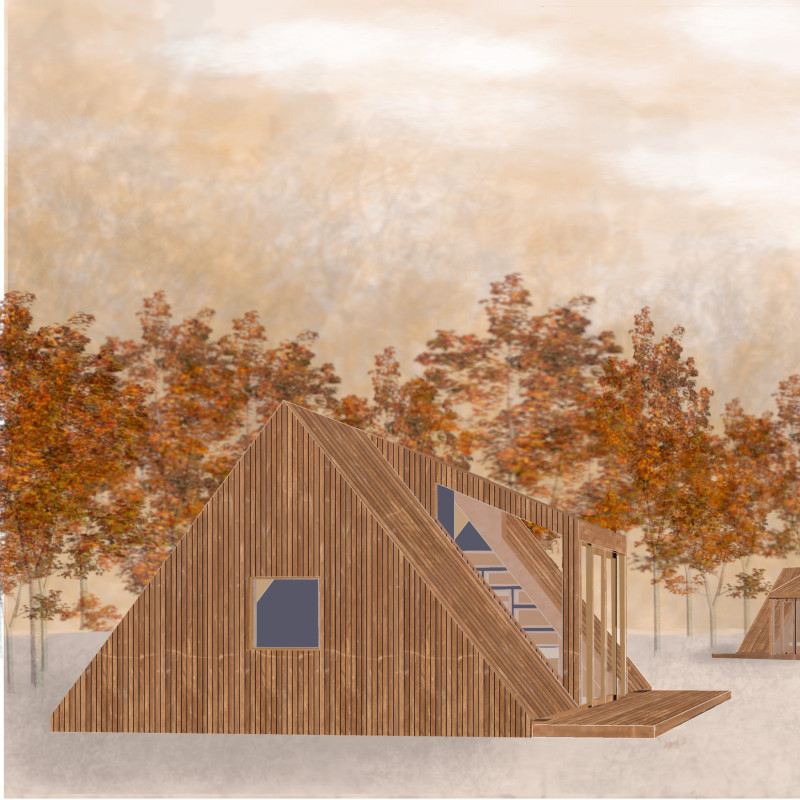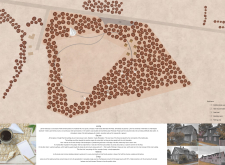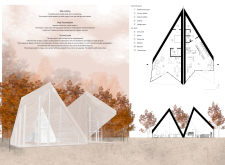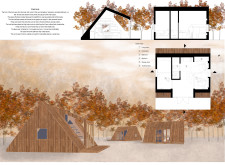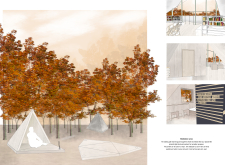5 key facts about this project
The architectural design is located in Latvia, a region known for its vast lowland plains, gentle hills, and extensive coastline. This environment enhances the natural beauty of the setting while informing the design choices made throughout the project. The intention is to provide comfortable living spaces that are in tune with the surroundings. By integrating afforestation and careful building orientation, the design creates inviting environments that promote a connection with nature.
Design Concept
The design centers around harmonizing built structures with the landscape. Buildings are positioned to face south, allowing for maximum natural light which enhances the interiors. Guest accommodations take the form of huts, strategically placed along the edge of a field and oriented southwest. This arrangement allows for beautiful views while ensuring each hut offers privacy. Such thoughtful planning encourages a relationship with the natural surroundings.
Pathways and Community Spaces
Pathways weave through the site, inviting exploration and interaction among guests. These paths enhance connectivity between different areas, promoting social engagement. The main building serves as the kitchen and dining area, designed for communal living. With movable furniture, the space adapts easily to various group sizes and occasions, allowing for gatherings. Furthermore, built-in bookshelves and seating areas offer functionality while creating a welcoming atmosphere.
Material Choices
Wood is the primary material used throughout. It supports a light structure, aligns with local building traditions, and helps keep the project aligned with sustainable practices. The choice of timber not only enhances the overall visual appeal but also reduces the carbon footprint. Local materials strengthen the connection between the buildings and their environment, reflecting a commitment to ecological responsibility.
The huts are designed with minimalist bathrooms that ensure privacy without compromising the overall living experience. Each unit's layout facilitates smooth transitions between sleeping and bathing areas, creating comfort for guests. Natural wood finishes contribute to a warm feel inside, enhancing the occupants' experience against the backdrop of the serene Latvian landscape.


